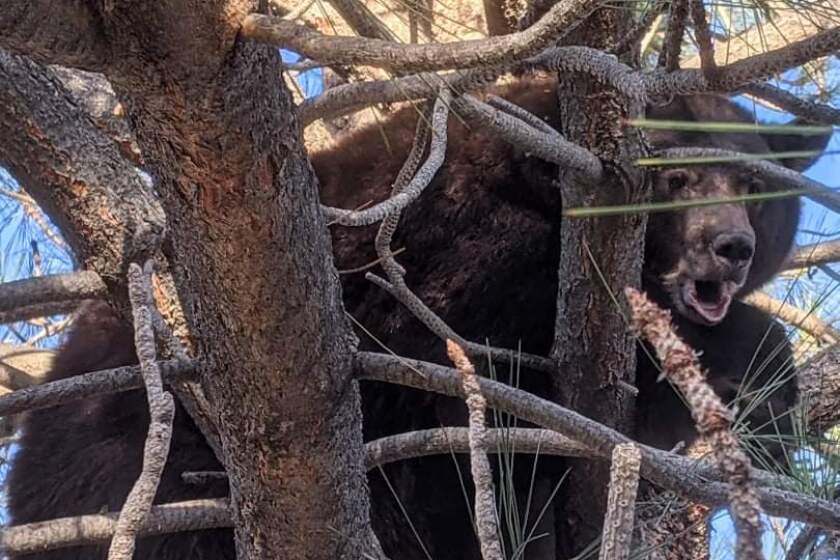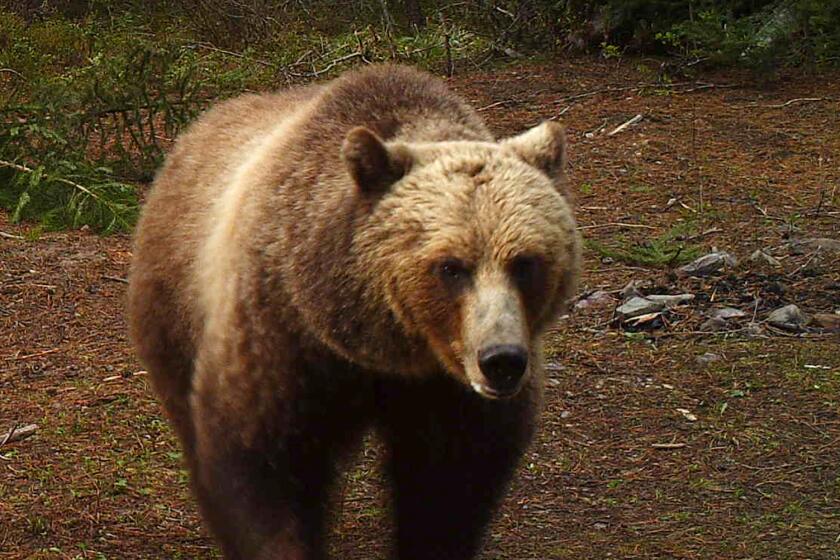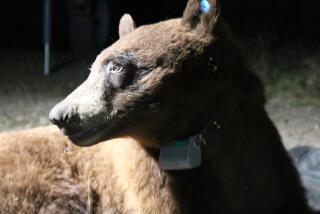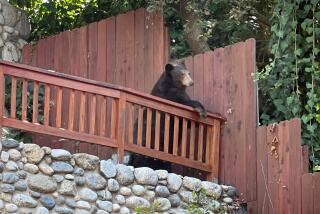‘I’ve had bears eat my chickens’: Bear sightings on the rise in Sierra Madre

- Share via
Bear sightings in Sierra Madre have increased in recent years, and city officials say they want the California Department of Fish and Wildlife to change its approach to dealing with the wild animals in the foothill community.
When residents in Sierra Madre report a bear on their property, the Sierra Madre Police Department has to contact the Department of Fish and Wildlife to respond to the incident, unless there is an immediate threat to a human.
Sierra Madre police responded to 130 calls about black bears making their way into residential areas in 2022, Capt. Henry Amos said Tuesday at a City Council meeting. He said those calls included 17 incidents in which bears entered homes and caused property damage.
Since January, there have been a dozen calls related to bears, including five in which bears tried to set up a den in a home’s crawl space, Amos said.
For seven months, the bear has smashed through doors in search of food. Euthanasia could be state wildlife officials’ last resort.
City officials intend to vote on a proclamation this month that would urge the state to update or enhance its policies for a sustainable managed bear population.
“The intent is to show the [Department of Fish and Wildlife] policies in place are not working for Sierra Madre,” City Manager Jose Reynoso said.
In the last decade, four “bear-human interactions” in and around the city limits have been reported, according to James Carlson, a city analyst. But, he said, he “wouldn’t necessarily call them attacks.”
In 2016, a Sierra Madre resident was hospitalized after he was attacked by a bear on a hiking trail.
Interactions between humans and bears have increased over the last four years, with more people reporting bears foraging for food and entering homes, city officials said.
The average California mountain lion is more likely to die at the hands of a human than of natural causes.
The bears appear emboldened and have caused property damage and eaten livestock.
“I’ve had bears eat my chickens,” Mayor Edward Garcia said during the council meeting.
Sierra Madre plans to release bear-proof trash cans to help deter hungry bears, but not just in high-frequency areas of the city. Officials do not want to push hungry bears further south if they run into an unbreakable trash can, Reynoso said.
The city partnered with the Department of Fish and Wildlife to approach the issue with canyon-area residents to let them know if their trash cans are unsecure or if pet food was left out.
Mackenzie Rich, a human wildlife conflict specialist with the fish and wildlife department, said a bear’s nose is 100 times more sensitive than a human’s nose, and bears can sniff out a bag of fast food in a locked car or cooked food in a kitchen.
On the 100th anniversary of the last shooting of a wild grizzly in the state, you’ve got to wonder why the bears we exterminated were made the symbol of the state.
“They’re very good at kind of taking advantage of what we call those unsecured attractants,” she said about unattended food. What residents are seeing is typical black bear behavior, Rich added.
If a person does encounter a bear in the wild, it’s best to back away with hands at the hips and leave the bear an open escape route, Rich said. The same applies to a bear that enters a home. Leave the windows and doors open and let the bear find its way out, she added.
But these wild animals might be more hungry than the average houseguest.
“Let’s say the animal approaches you and it’s not backing away. It’s coming directly at you. That’s when you would want to get big and get loud and scream and wave your arms in the air,” Rich said. “Make a lot of noise and try to tell the animal, ‘Hey! I’m sorry, you need to leave!’”
More to Read
Sign up for Essential California
The most important California stories and recommendations in your inbox every morning.
You may occasionally receive promotional content from the Los Angeles Times.














